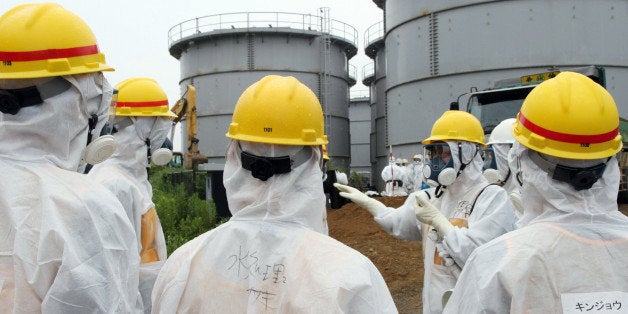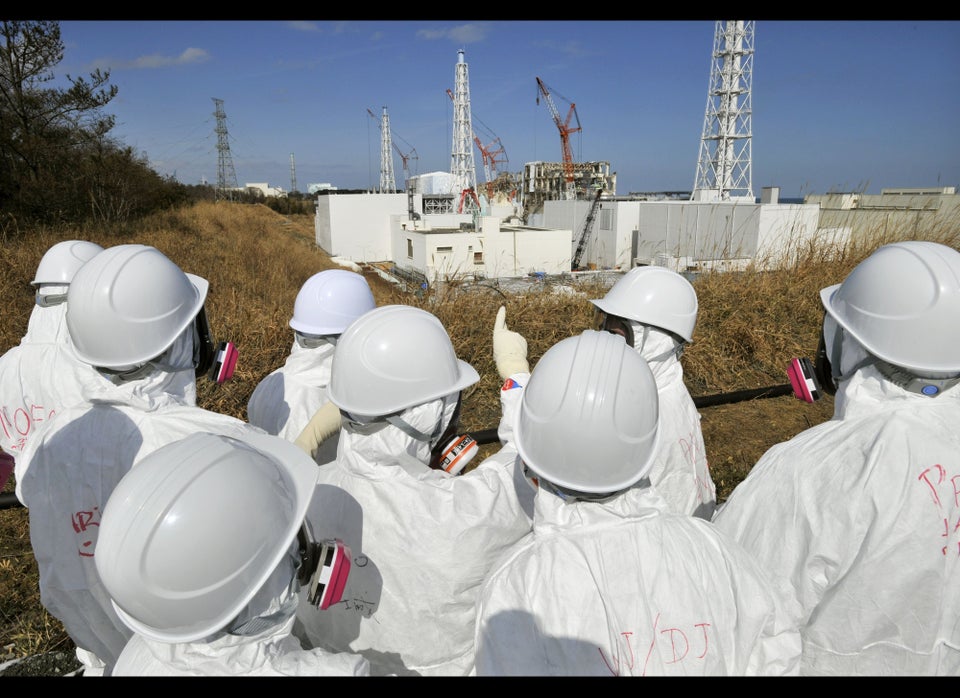
The following article is provided by Civil Beat.
By Sophie Cocke
University of Hawaii scientists are seeking to lessen anxieties about the potential health risks from Japan's Fukushima nuclear disaster in the wake of recent international reports warning that dangerous levels of radiation could hit the west coast of the United States next year.
Earlier this month, a study published in Science China warned that radiation leaking from the Fukushima Daiichi nuclear power plant is becoming more concentrated as it crosses the Pacific Ocean, rather than dispersing, and that it is making a beeline for the west coast of the United States. The study, coupled with recent disclosures by Tokyo Electric Power Company, or Tepco, that radiation-contaminated water continues to leak into the ocean, has rekindled public concerns about health dangers.
But local scientists at the International Pacific Research Center who have been tracking the nuclear disaster caused by Japan’s devastating earthquake and tsunami in 2011 say that the findings published in the Chinese scientific journal are simply wrong and that the health risks to residents on the West Coast and Hawaii are somewhere between minuscule and non-existent.
“This is a bad disaster,” said Henrieta Dulaiova, an assistant professor in UH’s Department of Geology and Geophysics. “But I don’t like scientists causing panic in the public.”
GuiJun Han, the lead author of the study published in Science China, did not respond to an email seeking comment for this story.
Her study has been picked up by several news outlets, including The Voice of Russia, which warned that "there could be ‘pockets’ and ‘streams’ of highly concentrated radiation," in an article headlined, “US West Coast to be hard-hit by Fukushima radiation."
Dulaiova explained that the radiation will be so diluted by the time it reaches the West Coast and circles back around to Hawaii, that it poses no health risk. “By now, the plume is so diffused that even if it makes it here, it will be really low levels,” she said.
Models show that the radiation plume, albeit at low levels, is expected to reach the west coast next year and Hawaii in 2015.
Dulaiova has been studying radiation levels in the waters off Hawaii since 2011, after the tsunami caused core meltdowns at three of the six reactors in the Fukushima plant. Monthly tests of the water have shown no increased levels of radiation.
More recently, she began testing the atmospheric fallout from the nuclear meltdown by testing mushrooms in Hawaii. Nuclear particles, released into the air after the initial disaster, fell to the ground during rainstorms. So far, the levels in mushrooms -- which bioaccumulate radioactive cesium, an isotope created from nuclear fission -- have been very low, said Dulaiova. In fact, her numbers show that the mushrooms contained about one percent of the radiation that was detected in other mushrooms in central Europe following the 1986 Chernobyl nuclear disaster.
Debris washing up on Hawaii's beaches and shorelines from the Japanese tsunami has also continued to show no elevated levels of radiation, according to Janice Okubo, spokeswoman for Hawaii's Department of Health.
In July, Shunichi Tanaka, the head of Japan's Nuclear Regulation Authority, acknowledged that the Fukushima power plant had likely been leaking contaminated water into the ocean for two years. And Tepco disclosed that it was struggling to seal leaks.
Enough radioactive water to fill 132 Olympic-sized pools has flowed into the ocean Bloomberg News reported recently.
Still, there's no new threat to U.S. residents, according to Ken Buesseler, a senior scientist with the Woods Hole Oceanographic Institution. Despite obfuscations by Tepco and Japanese regulators over the years, he said in an interview with Civil Beat last month that scientists have always believed that the power plant was still leaking. In fact, they continued to factor this into their models analyzing the radiation plume, he said, noting: "The new news is that Tepco is admitting to it and should have admitted to it sooner."
Buesseler has analyzed thousands of samples of fish caught offshore from the nuclear power plant since the disaster. His findings have shown consistently elevated levels of cesium-134, a radioactive isotope that decays rapidly, suggesting that the radiation leak never stopped.
While scientists say that the U.S. will be spared health threats as the radiation continues to disperse over thousands of miles of the Pacific Ocean, Japan is still grappling with a major disaster that prompted large-scale evacuations of residents living in the region around the Fukushima plant. The leaking radiation has devastated the Japanese fishing industry.
"There are still tens of thousands of people displaced from homes who will never be able to move back because of contamination in the ground," said Buesseler, noting a heightened risk of thyroid cancer due to the radiation.
"They're livelihoods are gone, their families are gone and their hometowns are gone."
Read more about environment issues on Civil Beat here.
